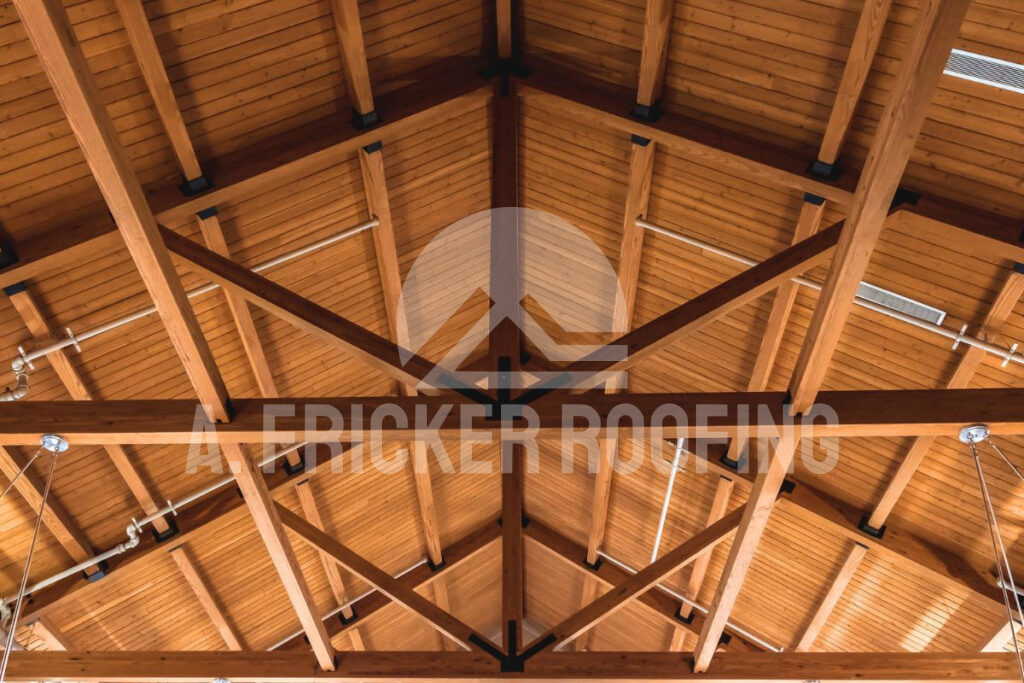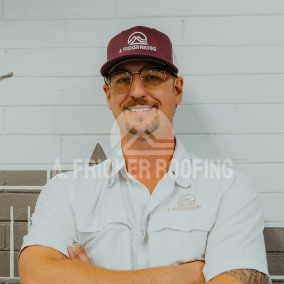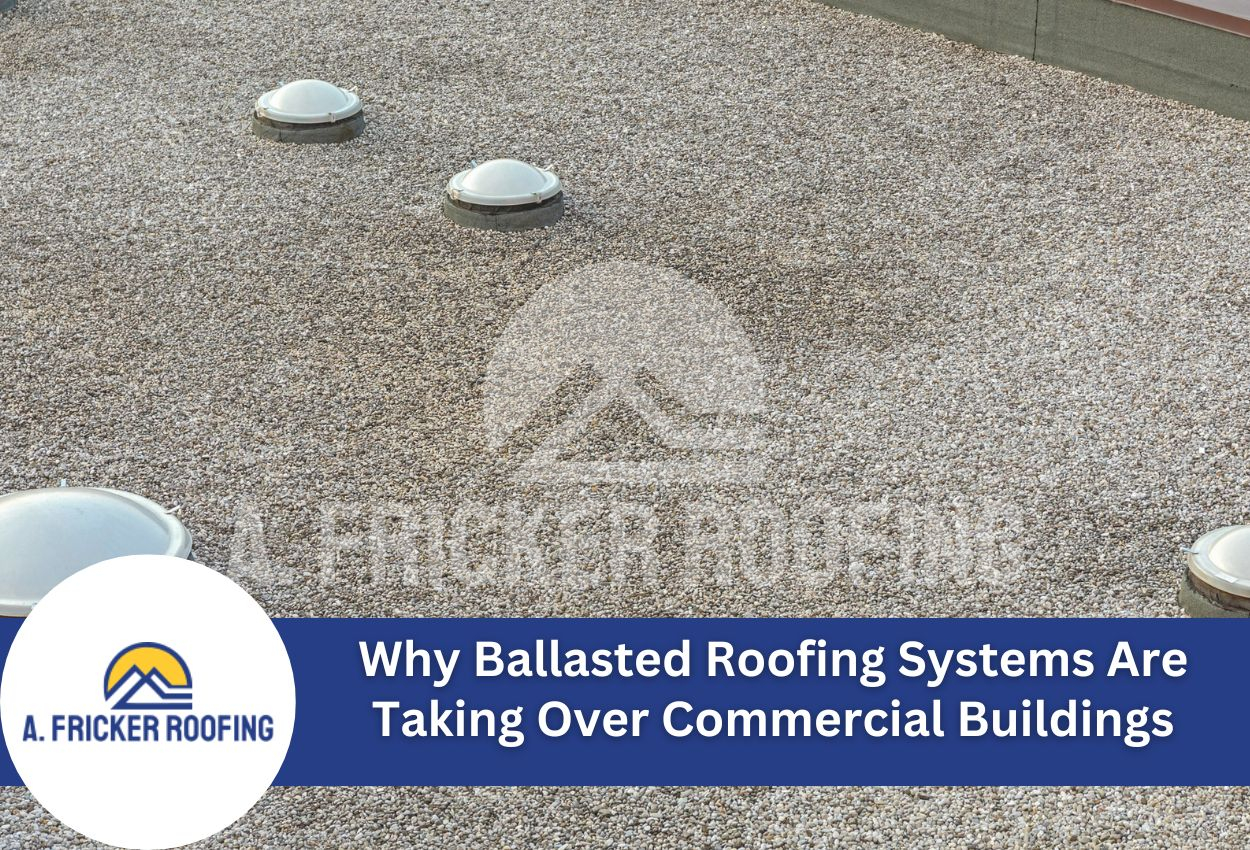
Roof trusses create the basic structure on which your entire roof is laid. If damaged, it can be a risk to your safety. At A. Fricker Roofing and Waterproofing, we are known for serving homeowners in Oklahoma with high-quality roofing solutions. From minor repairs to full roof replacements, our experts have experience handling different roofing materials and styles.
In one of our previous posts, we shared all about roof trusses and their types.
Today, we will share everything about how to repair a rotted roof truss and other things you need to know. After reading this 5-minute guide, you will understand how to deal with this situation. Let’s get started!
How To Identify A Rotted Roof Truss?
So, how do you know if you have a rotted roof truss? There are a few potential signs to look out for.
Start with checking for any dark spots or stains on your roof trusses. Rotted wood generally looks darker than healthy wood.
You might also see places where the wood looks soft or crumbly. Sometimes, you can even see mold growing on a rotted roof truss.
If you’re not sure, try gently poking the wood with a screwdriver. If it feels soft or if the screwdriver goes in easily, that’s a sign of rot.
What Causes Rotted Roof Trusses?

Now that you know how to spot a rotted roof truss, let’s talk about the reason behind this problem.
Generally, it’s because of water. Water can get into your roofing system in a few ways. Maybe you have a leak in your roof that’s letting rain in. Or maybe there’s too much moisture in your attic because it doesn’t have good airflow.
Sometimes, pipes in your walls or roof can leak and cause problems, too. No matter how it happens, when wood gets wet and stays wet, it starts to rot.
Tools and Materials You’ll Need To Fix A Rotted Roof Truss
Tools
- Saw
- Hammer
- Nails
- Drill
- Measuring tape
- Pry bar
Materials
- Pressure-treated lumber
- Wood screws
- Metal plates
- Wood filler
Always Prioritize Safety Before Starting The Repair Process
Before you start trying to repair rotted roof trusses, you need to consider safety. Working with roofs is a risky job, and even a minor fault during repair can lead to big problems. So you need to be careful!
Make sure you have the right safety tools. You’ll need strong gloves to protect your hands, safety glasses to keep debris out of your eyes, and a dust mask so you don’t breathe in any dust or allergens. It’s also a good idea to wear a hard hat or helmet, just in case.
Remember, it’s always better to be safe than sorry. If you’re not sure you can repair the rotted roof truss safely, ask for help from a professional.
Easy Steps To Fix A Roof Truss
Now that you’re all set up, it’s time to start fixing that rotted roof truss. Here’s how to do it, step by step:
- Clean the area around the rotted roof truss. Move any insulation or other materials out of the way so you can see what you’re doing.
- Next, you need to support the roof. Before you start cutting away the rotted wood, make sure the roof won’t fall in. You will likely need to put up some temporary support.
- Now, it’s time to remove the rotted wood. Use your saw to carefully remove all the bad parts. Make sure you do not damage the wood that is not rotted.
- Treat the area with some wood hardener once you’ve cut out the rot. This will help protect the good wood and stop the rot from coming back.
- Now, you need to prepare your new piece of wood. Cut a piece of pressure-treated lumber to fit the space where you cut out the rot. Make sure it’s the same size as the original truss.
- Put the new piece of wood in place. Use wood screws to attach it firmly to the good parts of the old truss.
- To make the repair extra strong, put metal plates on both sides of where you joined the new wood to the old.
- If you find any small gaps or uneven spots, use some wood filler to smooth them out.
- Lastly, check your work. Use a level to make sure the repaired truss is straight and even.
- Clean up any dust or mess, and put back any insulation you moved.
Remember, take your time and be careful when repairing rotted roof trusses. It’s better to work slowly and do a good job than to rush and make mistakes.
How To Prevent Future Rot In A Roof Truss?
Now that you’ve fixed your rotted roof truss, you want to make sure it doesn’t happen again. The best way to do this is to figure out what caused the rot in the first place and fix that problem.
If the rot was caused by a leak in your roof, make sure you fix the issue. Even small leaks can result in big problems over time. Check your roof regularly to find any signs of damage or wear.
If poor ventilation in your attic caused the rot, you might need to add some vents. Good airflow helps prevent moisture buildup and prevents rot in roof trusses. You can also use a dehumidifier in damp areas to keep moisture levels down.
It’s also a good idea to check your roof trusses regularly. At least once a year, take a look in your attic and check for any signs of new rot. The sooner you catch problems, the easier they are to fix.
Hire The Best-Rated Roofers For Roof Repairs In Tulsa, OK
If you are looking for faultless and reliable roof repairs in Tulsa, Ok, and the nearby areas, we are here to assist you. At A. Fricker Roofing and Waterproofing, we understand that roofs are a crucial investment. We provide durable roofing services, including repairs, new roof installation, and complete roof replacement for both residential and commercial properties. To know more about our services, call us today at (918) 402-7167.
A. If you have relevant experience handling roofing projects, you can try fixing a roof truss yourself. However, if you’re unsure or uncomfortable, it’s best to hire a professional to avoid further damage and costly repairs.
A. The repair time depends on the level of the damage and the complexity of the repair. Small and minor repairs can often be completed in a few hours, while major repairs or truss replacements might take several days.
A. It depends on your specific policy and the cause of the rot. If the rot is because of a covered peril, such as a storm or sudden accidental leak, your insurance might cover the repairs. However, if the rot is due to neglect or lack of maintenance, your insurance is unlikely to cover it.



